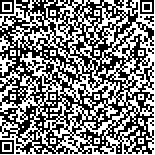张筱文,王强,李林,等.基于姿势解密技术的手法治疗对下交叉综合征的临床疗效[J].中华物理医学与康复杂志,2023,45(6):533-537
扫码阅读全文

|
| 基于姿势解密技术的手法治疗对下交叉综合征的临床疗效 |
|
| |
| DOI:10.3760/cma.j.issn.0254-1424.2023.06.011 |
| 中文关键词: 手法治疗 姿势解密技术 下交叉综合征 视觉模拟评分 Oswestry功能障碍评分 表面肌电图 |
| 英文关键词: Manual therapy Posture decoding Lower crossed syndrome Visual analogue scales Oswestry disability index Surface electromyography |
| 基金项目:山东省自然科学基金(ZR2020MH282、ZR2021QH143) |
|
| 摘要点击次数: 3698 |
| 全文下载次数: 4254 |
| 中文摘要: |
| 目的 观察基于姿势解密技术的手法治疗对下交叉综合征的临床疗效。 方法 选取下交叉综合征患者33例,按随机数字表法分为观察组17例和对照组16例。观察组患者给予基于姿势解密技术的手法治疗,对照组则给予本体感觉神经肌肉促进法(PNF)治疗,2组患者均每周治疗1次,每次治疗20 min,连续治疗4周。于治疗前、治疗1周后、治疗4周后、治疗结束1个月后(随访时),采用视觉模拟评分(VAS)、Oswestry功能障碍评分(ODI)分别评估2组患者的疼痛程度和腰椎功能;于治疗前、治疗1周后、治疗4周后,测量2组患者的手指指地距离;于治疗前、治疗4周后,测量2组患者骨盆前倾角度(ASIS-PSIS)、骶骨倾斜角度(SS)、腰椎曲度指数(LCI)和表面肌电腰背肌伸屈比(FRR)。 结果 治疗1周后和治疗4周后,2组患者的VAS评分、ODI评分和手指指地距离均显著小于组内治疗前(P<0.05),且观察组治疗1周后和治疗4周后的手指指地距离均显著小于对照组同时间点,治疗4周后的VAS评分和ODI评分均显著低于对照组同时间点,差异均有统计学意义(P<0.05)。随访时,2组患者的VAS评分和ODI均显著低于组内治疗前,观察组随访时的VAS评分和ODI评分均显著低于对照组随访时,差异均有统计学意义(P<0.05)。治疗4周后,2组患者的骨盆前倾角度、骶骨倾斜角度和腰椎曲度指数与组内治疗前比较,差异均有统计学意义(P<0.05)。治疗4周后,2组患者两侧的表面肌电腰背肌FRR与组内治疗前比较,差异均有统计学意义(P<0.05),且观察组治疗4周后左、右两侧的表面肌电腰背肌FRR分别为(13.27±5.48)和(14.54±4.90),改善均显著高于对照组治疗4周后,差异均有统计学意义(P<0.05)。 结论 基于姿势解密技术的手法治疗不仅可以显著改善下交叉综合征患者的骨盆前倾角度、腰椎前凸症状和腰椎活动度,还具有缓解腰痛、放松腰背部肌肉的作用。 |
| 英文摘要: |
| Objective To observe the clinical effectiveness of manual therapy based on posture decoding for patients with lower crossed syndrome (LCS). Methods Thirty-six LCS patients were randomly divided into an observation group and a control group, each of 18. The observation group received manual therapy based on posture decoding, while the control group was treated with proprioceptive neuromuscular facilitation (PNF), both in 20min sessions, once a week for 4 weeks. Before the experiment, after one, two and four weeks of treatment and followed-up 4 and 8 weeks later, both groups were evaluated using a visual analogue scale (VAS), the Oswestry Disability Index (ODI) and finger-floor distance (FFD). Anterior pelvic tilt angles (ASIS-PSISs), sacral slopes (SS), lumbar curve index (LCI) and surface EMG flexion-relaxation ratios (FRRs) were also recorded from both groups before and after the treatment. Results After one and four weeks of the treatment, the average VAS, ODI, and FFD had decreased significantly in both groups, with all significantly lower in the observation group, on average. At the final follow-up, the average VAS and ODI scores of both groups were significantly lower than before the treatment, with those of the observation group significantly lower than the control group′s averages. After 4 weeks of treatment significant differences were observed also in the group′s average ASIS-PSISs, SSs and LCIs compared with before the treatment. And right after the treatment the left and right surface electromyography FRRs of the observation group were significantly higher than those of the control group. Conclusion Manual therapy based on posture decoding can significantly improve the pelvis forward angle and lumbar motion of LCS patients, relieving back pain and relaxing back muscles. |
|
查看全文
查看/发表评论 下载PDF阅读器 |
| 关闭 |
|
|
|